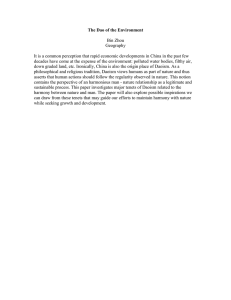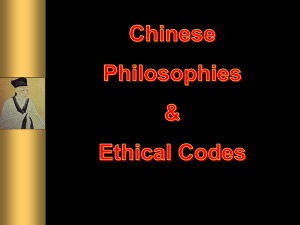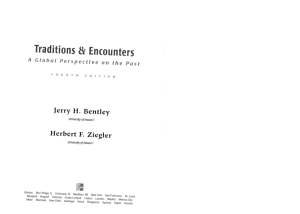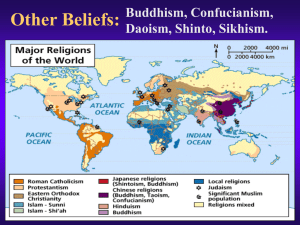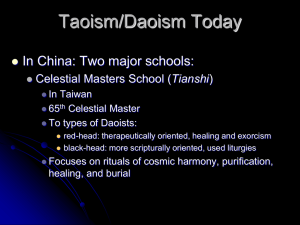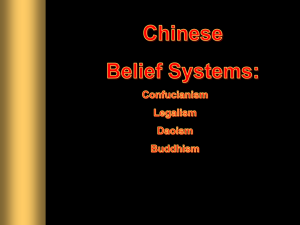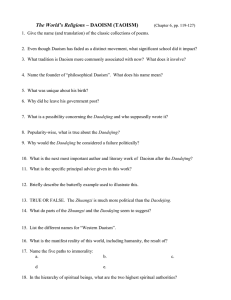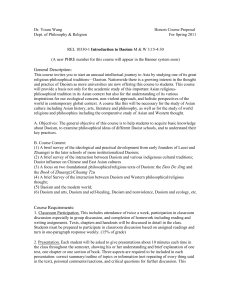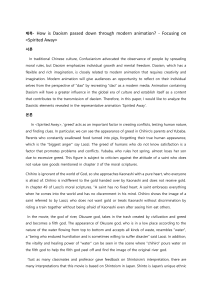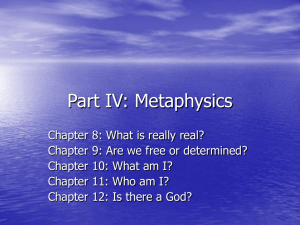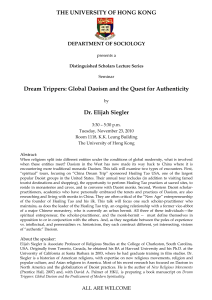Neolithic period - Early Imperial China
advertisement
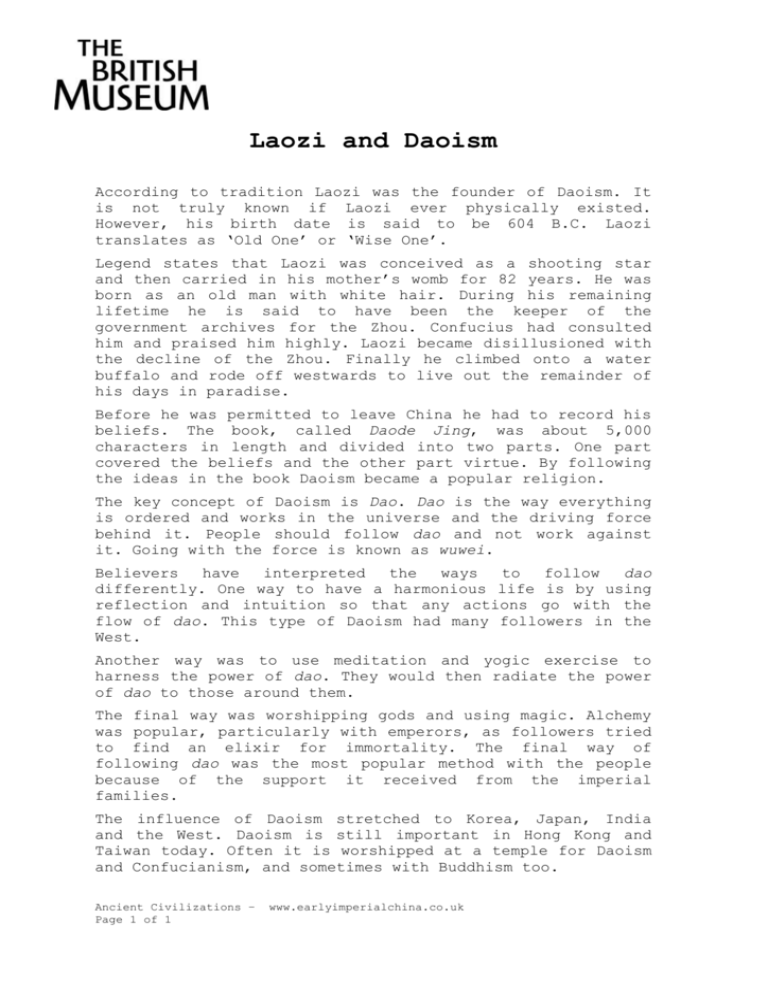
Laozi and Daoism According to tradition Laozi was the founder of Daoism. It is not truly known if Laozi ever physically existed. However, his birth date is said to be 604 B.C. Laozi translates as ‘Old One’ or ‘Wise One’. Legend states that Laozi was conceived as a shooting star and then carried in his mother’s womb for 82 years. He was born as an old man with white hair. During his remaining lifetime he is said to have been the keeper of the government archives for the Zhou. Confucius had consulted him and praised him highly. Laozi became disillusioned with the decline of the Zhou. Finally he climbed onto a water buffalo and rode off westwards to live out the remainder of his days in paradise. Before he was permitted to leave China he had to record his beliefs. The book, called Daode Jing, was about 5,000 characters in length and divided into two parts. One part covered the beliefs and the other part virtue. By following the ideas in the book Daoism became a popular religion. The key concept of Daoism is Dao. Dao is the way everything is ordered and works in the universe and the driving force behind it. People should follow dao and not work against it. Going with the force is known as wuwei. Believers have interpreted the ways to follow dao differently. One way to have a harmonious life is by using reflection and intuition so that any actions go with the flow of dao. This type of Daoism had many followers in the West. Another way was to use meditation and yogic exercise to harness the power of dao. They would then radiate the power of dao to those around them. The final way was worshipping gods and using magic. Alchemy was popular, particularly with emperors, as followers tried to find an elixir for immortality. The final way of following dao was the most popular method with the people because of the support it received from the imperial families. The influence of Daoism stretched to Korea, Japan, India and the West. Daoism is still important in Hong Kong and Taiwan today. Often it is worshipped at a temple for Daoism and Confucianism, and sometimes with Buddhism too. Ancient Civilizations – Page 1 of 1 www.earlyimperialchina.co.uk
